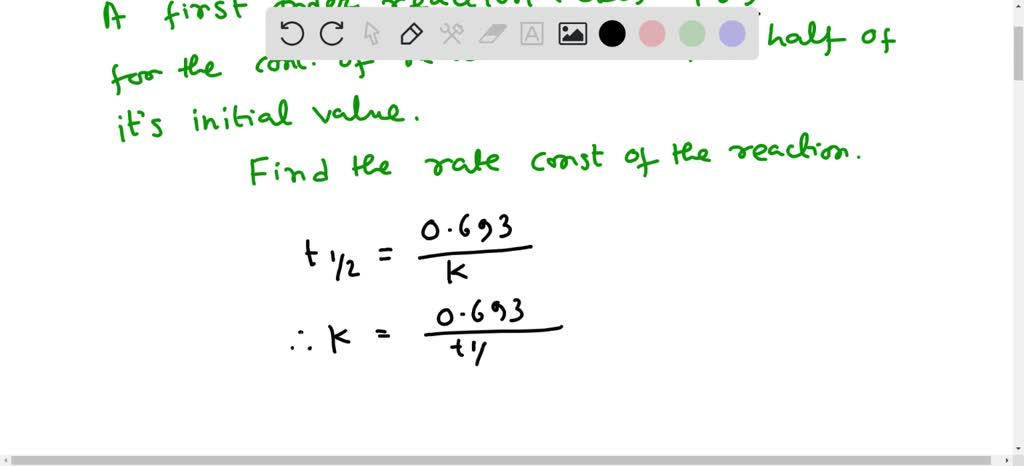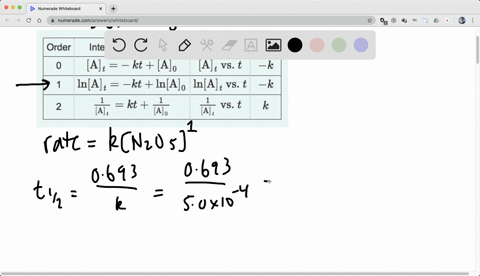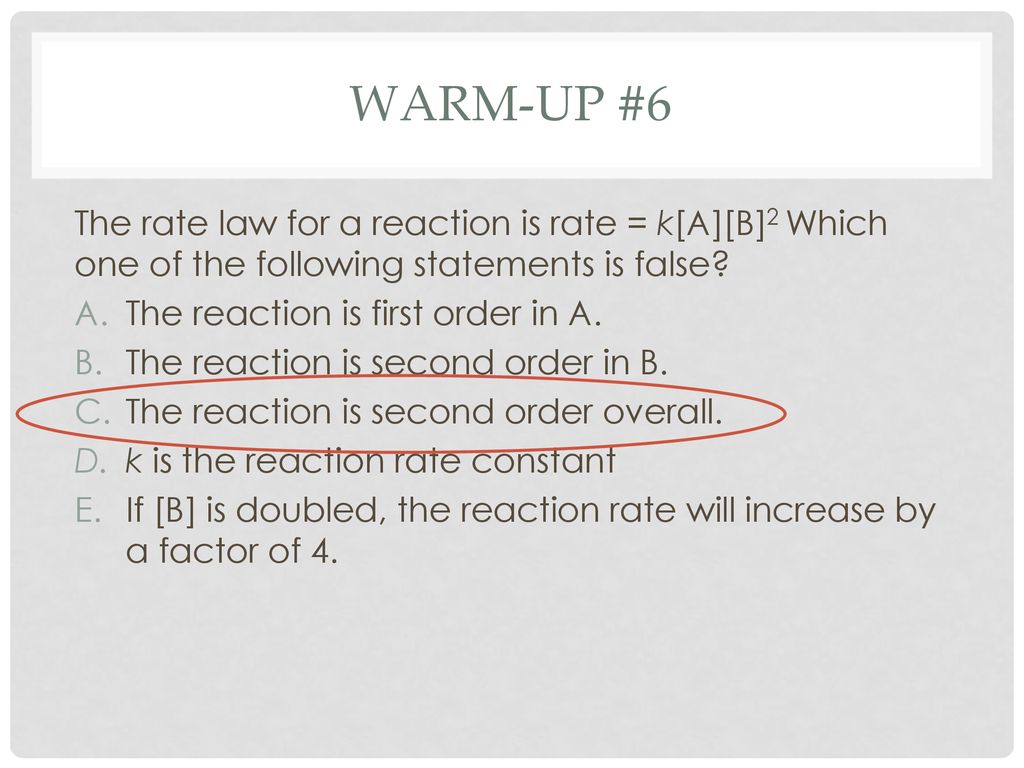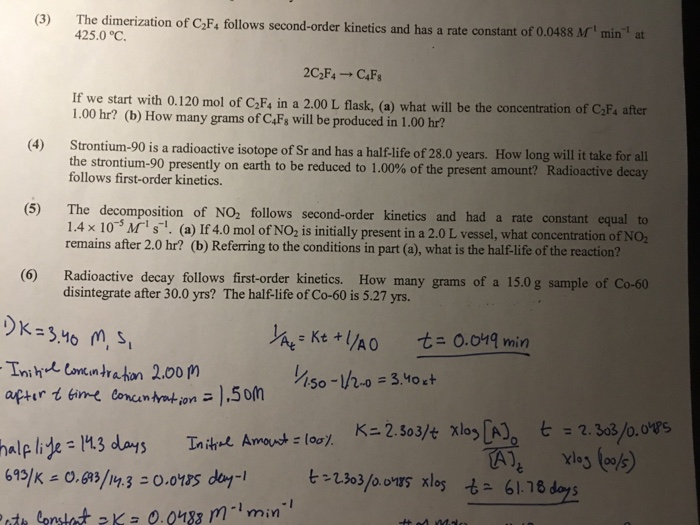
Calculate the half life of the first order reaction from their rate constant given as a) 200s^(-) b) 2min^(-1) c) 4 "year"^(-1).

SOLVED: What is the rate constant of a first-order reaction that takes 456 seconds for the reactant concentration to drop to half of its initial value?

The energy of activation and specific rate constant for a first order reaction at 25^∘ C are 100kJ/mole and 3.46 × 10^-5sec^-1 respectively. Determine the temperature at which half - life of

The reaction is given below, the rate constant for disappearance of A is 7.48 × 10^-3sec^-1 . The time required for the total pressure in a system containing A at an initial

The rate constant of a reaction is 0.69 xx 10^(-1) and the initial concentration is 0.2 "mol l"^(-1). The half-life period is

Calculate the half life of a first order reaction from their rate constants given below:(a) 200 s^-1 ; (b) 2 min^-1 ; (c) 4 year^-1 .

Half life of a first order reaction is 2.1xx10^(12)s. Calculate the rate constant of the reactio... - YouTube
10. rate constant of first order reaction is 0.0693per minute . calculate the percentage of reaction remaining at the end of the 60 minute.(with detail solution )

SOLVED: The following count rate data from a radioactive isotope were measured (min) 3.0 6.0 9.0 12.0 18.0 cnts /min 9302 7932 6901 5853 4397 t (min) cnts /min 24.0 3200 30.0

The unit of first order rate constant when concentration is measured in terms of pressure and time - YouTube

SOLVED: The potassium isotope K-40 undergoes beta decay with a half-life of 1.83*10^9 years. Find the number of beta decays that occur per second in 1.0g of pure K-40.






